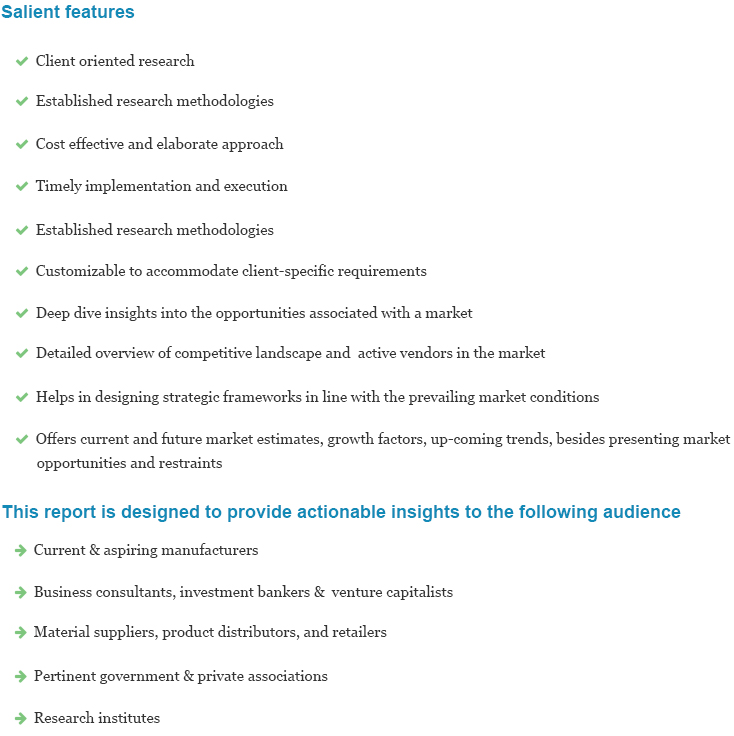
Beer Market Size, Share, Growth, Price Trends, Regional Outlook, Competitive Strategies and Forecasts, 2019 To 2025
- Published: March, 2019
- Format: Electronic (PDF)
- Number of pages: 70
- Industry: Food & Beverages
The global beer market is expected to witness strong growth in the years to come. Increasing disposable income, along with growing consumer preference for the product over other alcoholic drinks, can drive the market in the years to come. Additionally, growing youth population and increasing female consumers are expected to boost the product demand. Cultural changes and growing influence of western culture have also increased the consumption of alcoholic beverages.
Growing production of craft-beer and increasing awareness among consumers regarding varied flavors of these drinks can create many opportunities for the market. Growing consumer preference for flavored and low alcohol by volume (ABV) beer is also expected to fuel the demand for these products in the coming years. Flavors, such as amber ale, amber lager, and India pale ale (IPA) are some of the most preferred styles of craft beer. They are mostly consumed through different hospitality channels across developed nations. For instance, Avery Brewing Company, a prominent craft brewery, introduced a new bear called Hazyish IPA. It is a juicy and hazy IPA with low bitterness and 7.0 percent ABV. It has an aroma of four varied hop varieties, including Amarillo, Mosaic, Simcoe, and Azacca, and a creamy mouthfeel. Furthermore, numerous governments are focusing on increasing production of these products by incorporating new breweries in order to improve economic growth.
However, presence of high excise duties on imported and local products and rising health awareness among consumers may hinder market growth. Though the harmful effects of alcohol are recognized, alcohol can also be beneficial in moderate amounts. Increasing awareness regarding health benefits of draught beer can have a positive impact on market growth. Moderate dose of well-formed product can aid in reducing the cholesterol levels, improving kidney health, and avoiding kidney stones. However, introduction of non-alcoholic and naturally sweetened drinks can create growth opportunities for the market.
The market can be segmented on the basis of distribution channel as on-trade and off-trade. On-trade distribution involves sale of the beverages in restaurants, bars, pubs, and other channels in the hospitality industry. On-trade craft beer is expensive than off-trade. Off-trade distribution comprises sale of the product through online stores, retail stores, and wholesalers. The segment is anticipated to witness significant growth in emerging countries due to presence of consumers with low to medium buying capacity.
North America is a leading consumer of the product. The U.S. is expected to contribute significantly to market growth owing to remarkable expansion of breweries. Growing efforts by the breweries to develop new flavors can boost regional growth in the coming years. Europe is expected to be a leading regional market for craft beer due to growing consumer preference for flavored beer and increasing demand for IPA and pale ale. Tradition of consuming alcoholic beverages along with meals is likely to boost regional market growth. In addition, presence of a number of established and recognized players in these regions is likely to drive the global market in the years to come.
Asia Pacific is anticipated to witness high growth in the years to come. Emerging countries, such as India and China, are the key contributors to regional market growth. In addition, South Korea and Singapore are expected to contribute significantly to the growth. Improving economic conditions and growing adoption of western lifestyle are expected to fuel regional growth in the years to come. Consumption of the product is high among the corporate employees of India. It is reasonably priced than other alcoholic beverages and contains low ABV, thereby making people feel less high.
Some of the leading companies operating in the beer market are Carlsberg Breweries A/S, Sapporo Breweries, Anheuser-Busch InBev, Heineken N.V., Tsingtao Breweries, and Sapporo Breweries. Players are making high investment to facilitate innovative beer breweries and adoption of smart marketing approaches to gain traction in the market. For instance, Japanese Craft Beer launched a marketing campaign called "Drink in a New Language" in the U.S. With this campaign, 22 Japanese craft beer producers invited Americans to discover craft brewing methods and unique flavor profile of Japanese craft beer.

Choose License Type
- World's largest premium report database
- Transparent pre & post sale customer engagement model
- Unparalleled flexibility in terms of rendering services
- Safe & secure web experience
- 24*5 Research support service
